#fall 2013 exhibition
Explore tagged Tumblr posts
Text

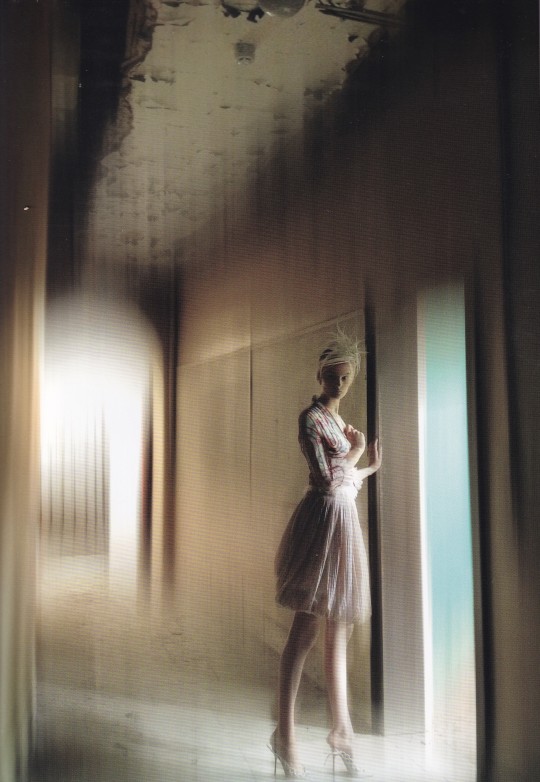
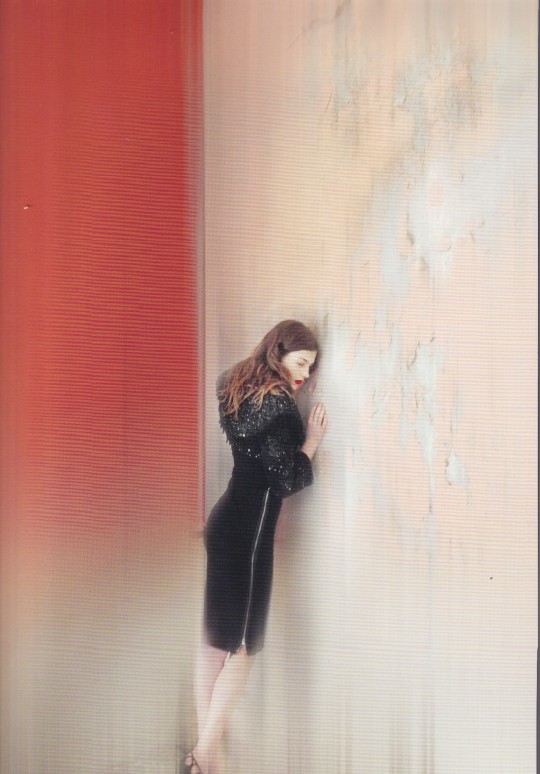
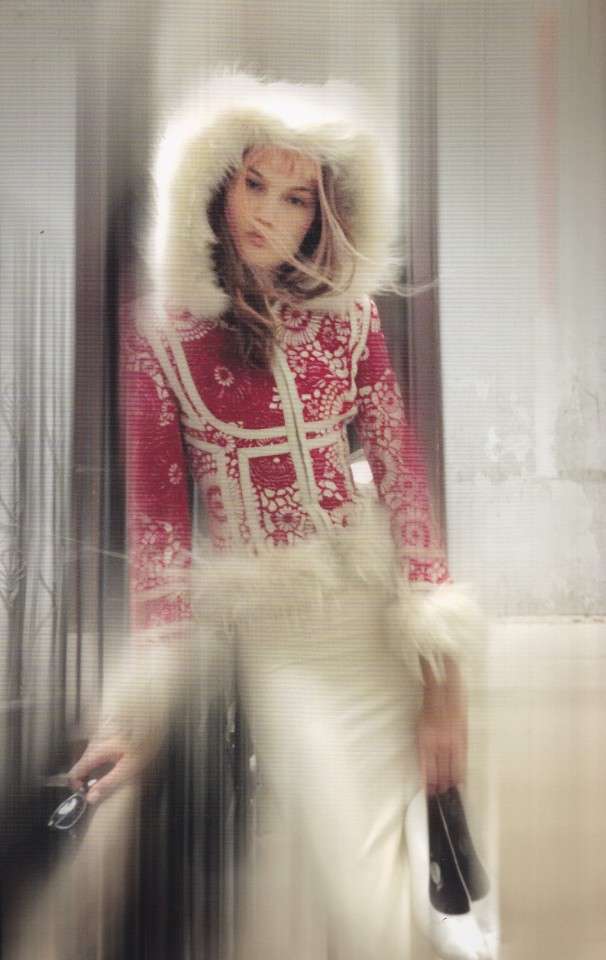






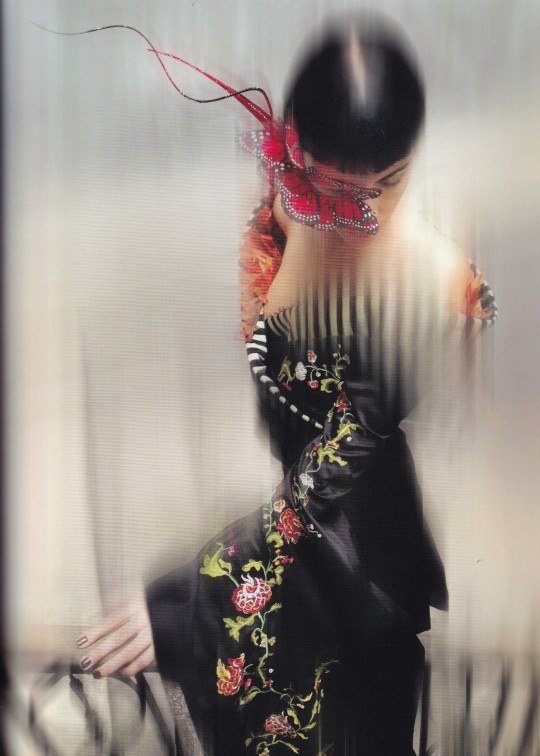
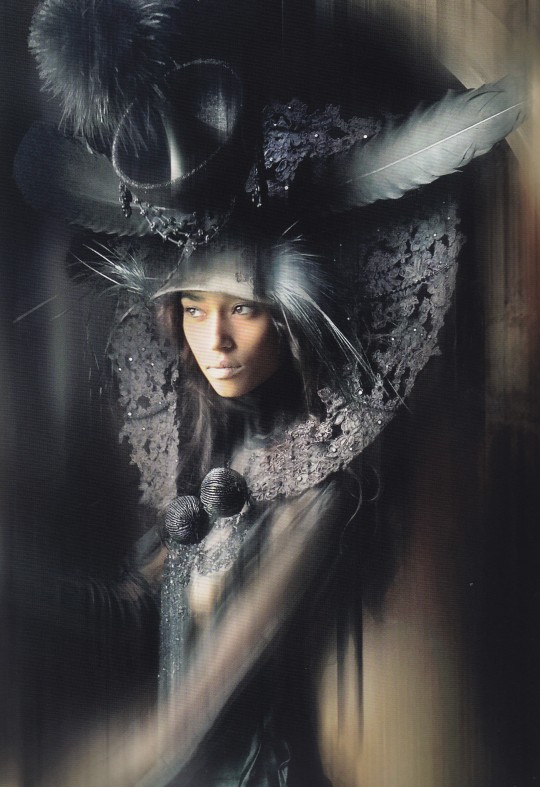

Isabella Blow : Fashion Galore!
Caroline Evans, Alistair O'Neill, Nick Knight
Rizzoli, New York 2013, 160 pages, 24,4x32cm, ISBN 978-0-8478-4172-1
euro 40,00
email if you want to buy [email protected]
A beautifully photographed insider’s look at the highly influential personal style and wardrobe of Isabella Blow, one of fashion’s most courageous, outrageous, and imaginative muses. Isabella Blow was said to have been a one-off of her own creation in a world of copycats. She had a gift for spotting fashion genius her discoveries included Alexander McQueen, Hussein Chalayan, and Sophie Dahl, all of whom became instantaneously iconic. Her eye put her at the center of the high fashion scene, yet Isabella s pedigree, intoxicating energy, wicked sense of humor, boundaries-pushing aesthetics, and her willingness to wear the outrageous made her into a fashion icon. This elaborate volume published with Somerset House and in association with the Isabella Blow Foundation and Central Saint Martins to accompany the fall 2013 exhibition is an exhaustive survey of Isabella’s personal collection. With over 100 gorgeous full-color and black-and-white photographs shot exclusively for this publication by Nick Knight, this volume is the first to catalogue her own famous wardrobe that includes thousands of pieces by the most important contemporary designers, including McQueen, Philip Treacy, and Manolo Blahnik. The impact of Isabella’s influence can be seen within this captivating and inspiring volume, an essential addition to libraries of the fashionable, cultured, and eclectic.
29/02/24
#Isabella Blow#fashion muse#fashion exhibition catalogue#fall 2013 exhibition#Alexander McQueen#Philip Treacy#Manolo Blahnik#Somerset House#Central Saint Martins#fashion books#fashionbooksmilano
28 notes
·
View notes
Text

The Eras Tour | Midnights section | Version 7
Jenny Packham custom dress and coat
In a night full of plot twists (Exhibit A: There will be no explanation there will just be a second reputation bodysuit), the one that actually has me the most stumped is this designer switch during the Midnights set.
Taylor has worn a number of sparkling “Anti-Hero” shirt dresses that are a blink-and-you-miss-it moment in the show. She only briefly wears this piece right before a dramatic on-stage costume change that leads into “Midnight Rain”. All of the dresses, including the coordinating faux fur shag jacket, have been by Oscar de la Renta. Until now, that is, with this new addition by Jenny Packham - coat included.
On a personal note, it’s such a thrill to see Jenny Packham’s designs brought back into Taylor’s rotation. She used to wear a number of JP pieces back in the day, mostly from 2010-2013 and typically as sparkling performance wear. One thing I’ve often noted is how Eras Tour costuming excels at referencing and refreshing the iconic designs of Taylor’s past. This feels like a more subtle and IYKYK moment to tap one of Taylor’s earliest designer loves for a moment on the Eras Tour stage.
The “Anti-Hero” dresses themselves are a wily bunch, both because they’re only worn for a short period and also because their fabrication and sparkle factor make it a little tough to tell them apart. Thus far, we have received (nicknames are patent pending /joke): Confetti, Blue, Pink, Purple, “Rainbow Fish” / Iridescent, Dark Purple and now a new colourway which I will call “Purple Confetti” because its lavender base and chunky Swarovski crystals and paillette embroidery falls close to the original Version 1 Confetti of this dress. The coordinating lavender and “aurora borealis” faux fur jacket also came with matching paillette embroidery.
Which “Anti-Hero” dress is your fave?
Photo by John Shearer/TAS24 via Getty Images
217 notes
·
View notes
Text
Climate denial may be on the decline, but a phenomenon at least as injurious to the cause of climate protection has blossomed beside it: doomism, or the belief that there’s no way to halt the Earth’s ascendant temperatures. Burgeoning ranks of doomers throw up their hands, crying that it’s too late, too hard, too costly to save humanity from near-future extinction.
There are numerous strands of doomism. The followers of ecologist Guy McPherson, for example, gravitate to wild conspiracy theories that claim humanity won’t last another decade. Many young people, understandably overwhelmed by negative climate headlines and TikTok videos, are convinced that all engagement is for naught. Even the Guardian, which boasts superlative climate coverage, sometimes publishes alarmist articles and headlines that exaggerate grim climate projections.
This gloom-and-doomism robs people of the agency and incentive to participate in a solution to the climate crisis. As a writer on climate and energy, I am convinced that we have everything we require to go carbon neutral by 2050: the science, the technology, the policy proposals, and the money, as well as an international agreement in which nearly 200 countries have pledged to contain the crisis. We don’t need a miracle or exorbitantly expensive nuclear energy to stave off the worst. The Gordian knot before us is figuring out how to use the resources we already have in order to make that happen.
One particularly insidious form of doomism is exhibited in Kohei Saito’s Slow Down: The Degrowth Manifesto, originally published in 2020 and translated from Japanese into English this year. In his unlikely international bestseller, Saito, a Marxist philosopher, puts forth the familiar thesis that economic growth and decarbonization are inherently at odds. He goes further, though, and speculates that the climate crisis can only be curbed in a classless, commons-based society. Capitalism, he writes, seeks to “use all the world’s resources and labor power, opening new markets and never passing up even the slightest chance to make more money.”
Capitalism’s record is indeed damning. The United States and Europe are responsible for the lion’s share of the world’s emissions since the onset of the Industrial Revolution, yet the global south suffers most egregiously from climate breakdown. Today, the richest tenth of the world’s population—living overwhelmingly in the global north and China—is responsible for half of global emissions. If the super-rich alone cut their footprints down to the size of the average European, global emissions would fall by a third, Saito writes.
Saito’s self-stated goals aren’t that distinct from mine: a more egalitarian, sustainable, and just society. One doesn’t have to be an orthodox Marxist to find the gaping disparities in global income grotesque or to see the restructuring of the economy as a way to address both climate breakdown and social injustice. But his central argument—that climate justice can’t happen within a market economy of any kind—is flawed. In fact, it serves next to no purpose because more-radical-than-thou theories remove it from the nuts-and-bolts debate about the way forward.
We already possess a host of mechanisms and policies that can redistribute the burdens of climate breakdown and forge a path to climate neutrality. They include carbon pricing, wealth and global transaction taxes, debt cancellation, climate reparations, and disaster risk reduction, among others. Economies regulated by these policies are a distant cry from neoliberal capitalism—and some, particularly in Europe, have already chalked up marked accomplishments in reducing emissions.
Saito himself acknowledges that between 2000 and 2013, Britain’s GDP increased by 27 percent while emissions fell by 9 percent and that Germany and Denmark also logged decoupling. He writes off this trend as exclusively the upshot of economic stagnation following the Lehman Brothers bankruptcy in 2008. However, U.K. emissions have continued to fall, plummeting from 959 million to 582 million metric tons of carbon dioxide equivalent between 2007 and 2020. The secret to Britain’s success, which Saito doesn’t mention, was the creation of a booming wind power sector and trailblazing carbon pricing system that forced coal-fired plants out of the market practically overnight. Nor does Saito consider that from 1990 to 2022, the European Union reduced its emissions by 31 percent while its economy grew by 66 percent.
Climate protection has to make strides where it can, when it can, and experts acknowledge that it’s hard to change consumption patterns—let alone entire economic systems—rapidly. Progress means scaling back the most harmful types of consumption and energy production. It is possible to do this in stages, but it needs to be implemented much faster than the current plodding pace.
This is why Not the End of the World: How We Can Be the First Generation to Build a Sustainable Planet by Hannah Ritchie, a data scientist at the University of Oxford, is infinitely more pertinent to the public discourse on climate than Saito’s esoteric work. Ritchie’s book is a noble attempt to illustrate that environmental protection to date boasts impressive feats that can be built on, even as the world faces what she concedes is an epic battle to contain greenhouse gases.
Ritchie underscores two environmental afflictions that humankind solved through a mixture of science, smart policy, and international cooperation: acid rain and ozone depletion. I’m old enough to remember the mid-1980s, when factories and power plants spewed out sulfurous and nitric emissions and acid rain blighted forests from the northeastern United States to Eastern Europe. Acidic precipitation in the Adirondacks, my stomping grounds at the time, decimated pine forests and mountain lakes, leaving ghostly swaths of dead timber. Then, scientists pinpointed the industries responsible, and policymakers designed a cap-and-trade system that put a price on their emissions, which forced industry into action; for example, power plants had to fit scrubbers on their flue stacks. The harmful pollutants dropped by 80 percent by the end of the decade, and forests grew back.
The campaign to reverse the thinning of the ozone layer also bore fruit. An international team of scientists deduced that man-made chlorofluorocarbons (CFC) in fridges, freezers, air conditioners, and aerosol cans were to blame. Despite fierce industry pushback, more than 40 countries came together in Montreal in 1987 to introduce a staggered ban on CFCs. Since then, more countries joined the Montreal Protocol, and CFCs are now largely a relic of the past. As Ritchie points out, this was the first international pact of any kind to win the participation of every nation in the world.
While these cases instill inspiration, Ritchie’s assessment of our current crisis is a little too pat and can veer into the Panglossian. The climate crisis is many sizes larger in scope than the scourges of the 1980s, and its antidote—to Saito’s credit—entails revamping society and economy on a global scale, though not with the absolutist end goal of degrowth communism.
Ritchie doesn’t quite acknowledge that a thoroughgoing restructuring is necessary. Although she does not invoke the term, she is an acolyte of “green growth.” She maintains that tweaks to the world’s current economic system can improve the living standards of the world’s poorest, maintain the global north’s level of comfort, and achieve global net zero by 2050. “Economic growth is not incompatible with reducing our environmental impact,” she writes. For her, the big question is whether the world can decouple growth and emissions in time to stave off the darkest scenarios.
Ritchie approaches today’s environmental disasters—air pollution, deforestation, carbon-intensive food production, biodiversity loss, ocean plastics, and overfishing—as problems solvable in ways similar to the crises of the 1980s. Like CFCs and acid rain, so too can major pollutants such as black carbon and carbon monoxide be reined in. Ritchie writes that the “solution to air pollution … follows just one basic principle: stop burning stuff.” As she points out, smart policy has already enhanced air quality in cities such as Beijing (Warsaw, too, as a recent visit convinced me), and renewable energy is now the cheapest form of power globally. What we have to do, she argues, is roll renewables out en masse.
The devil is in making it happen. Ritchie admits that environmental reforms must be accelerated many times over, but she doesn’t address how to achieve this or how to counter growing pushback against green policies. Just consider the mass demonstrations across Europe in recent months as farmers have revolted against the very measures for which Ritchie (correctly) advocates, such as cutting subsidies to diesel gas, requiring crop rotation, eliminating toxic pesticides, and phasing down meat production. Already, the farmers’ vehemence has led the EU to dilute important legislation on agriculture, deforestation, and biodiversity.
Ritchie’s admonishes us to walk more, take public transit, and eat less beef. Undertaken individually, this won’t change anything. But she acknowledges that sound policy is key—chiefly, economic incentives to steer markets and consumer behavior. Getting the right parties into office, she writes, should be voters’ priority.
Yet the parties fully behind Ritchie’s agenda tend to be the Green parties, which are largely in Northern Europe and usually garner little more than 10 percent of the vote. Throughout Europe, environmentalism is badmouthed by center-right and far-right politicos, many of whom lead or participate in governments, as in Finland, Hungary, Italy, the Netherlands, Serbia, Slovakia, and Sweden. And while she argues that all major economies must adopt carbon pricing like the EU’s cap-and-trade system, she doesn’t address how to get the United States, the world’s second-largest emitter, to introduce this nationwide or even expand its two carbon markets currently operating regionally—one encompassing 12 states on the East Coast, the other in California.
History shows that the best way to make progress in the battle to rescue our planet is to work with what we have and build on it. The EU has a record of exceeding and revising its emissions reduction targets. In the 1990s, the bloc had the modest goal of sinking greenhouse gases to 8 percent below 1990 levels by 2008-12; by 2012, it had slashed them by an estimated 18 percent. More recently, the 2021 European Climate Law adjusted the bloc’s target for reducing net greenhouse gas emissions from 40 percent to at least 55 percent by 2030, and the European Commission is considering setting the 2040 target to 90 percent below 1990 levels.
This process can’t be exclusively top down. By far the best way for everyday citizens to counter climate doomism is to become active beyond individual lifestyle choices—whether that’s by bettering neighborhood recycling programs, investing in clean tech equities, or becoming involved in innovative clean energy projects.
Take, for example, “community energy,” which Saito considers briefly and Ritchie misses entirely. In the 1980s, Northern Europeans started to cobble together do-it-yourself cooperatives, in which citizens pooled money to set up renewable energy generation facilities. Many of the now more than 9,000 collectives across the EU are relatively small—the idea is to stay local and decentralized—but larger co-ops illustrate that this kind of enterprise can function at scale. For example, Belgium’s Ecopower, which forgoes profit and reinvests in new energy efficiency and renewables projects, provides 65,000 members with zero-carbon energy at a reduced price.
Grassroots groups and municipalities are now investing in nonprofit clean energy generation in the United States, particularly in California and Minnesota. This takes many forms, including solar fields; small wind parks; electricity grids; and rooftop photovoltaic arrays bolted to schools, parking lots, and other public buildings. Just as important as co-ownership—in contrast to mega-companies’ domination of the fossil fuel market—is democratic decision-making. These start-ups, usually undertaken by ordinary citizens, pry the means of generation out of the hands of the big utilities, which only grudgingly alter their business models.
Around the world, the transition is in progress—and ideally, could involve all of us. The armchair prophets of doom should either join in or, at the least, sit on the sidelines quietly. The last thing we need is more people sowing desperation and angst. They play straight into the court of the fossil fuel industry.
118 notes
·
View notes
Text
photography round 3 poll 5


[Painted house in Zalipie] by Bruno Barbey 1976:
submitted description: muted colors photo of a village house with a thatched roof. the wooden outside walls are painted in polish folk designs. on the left, there is an older woman in colorful clothes with her back to the camera. on the right there is a flock of geese
propaganda: i like how barbey's photos of poland are mostly in shades of grey even though the colors are clearly there. the decor on the wall and the woman's clothes and the geese's beaks are colorful!!!!! but you can almost mistake this for a black and white photo. magic. very nice retro vibe
about the author: Bruno Barbey was a french photographer who documented life in many poor or war-ridden areas of the world. There was an exhibition of his works earlier this year at the National Museum in Warsaw. his photos of 70s and 80s poland are a fascinating glance into the past, i really like how they show that even in (sometimes shocking) poverty there are moments of genuine joy and beauty. you can see more of them here and here
A man feeding swans in the snow by Marcin Ryczek, 2013:
propaganda: The composition is just so very striking, its simple in the idea but wow it works it. It looks almost unnatural in it.
propaganda: This was taken in Kraków. You can look up Ryczek's own perspective on it on his web site, where he likens it to the Yin Yang symbol. When I first saw it, I felt like it was two worlds spilling into each other, and therefore themselves falling apart in a way, and it felt chaotic to me. Beautiful composition.
about the artist: He has a studio: https://www.imagenationparis.com/marcinryczek
submitted by @slaviclore (among others)
43 notes
·
View notes
Text
The Rise and Fall of Career Success in Vedic Astrology


I just watched D Angelo Wallace’s video on Katy Perry’s downfall in her music career. I found it so interesting and wanted to know whether we could see this decline present in her chart. Which is why we’ll be discussing music artists who suddenly rise to fame, as well as the indicators of one’s decline in their career and why some are able to sustain this fame for such a long time.
Note: I’ll only be discussing the D1 and D9 charts, as well as using the Vimshottri Dasha systems. If anyone who’s more qualified or has a valid opinion regarding my research, please don’t hesitate to comment, I’m always open to learning more :)
~~~~~~~~~~
✨So what causes the rise and fall of someone’s success? ✨
To make a long story short, the answer is simply “Mahadashas”.
A lot of people have fame indicators as well as very favourable yogas in their charts but many won’t ever run through the favourable Dasha in order to experience these fruits in this life time. Or they may run through it too early or late in their life.
- The dignity of your Mahadasha/Antardasha planet is SO important. If the planet isn’t strong or atleast well aspected then you won’t be able to reap the full benefits of that planet.
- The D9 chart is extremely important, if the mahadasha is well placed in the D1 but not in D9 then we can see a rapid decline in one’s career.
Exhibit A: Katy Perry



Katy Perry is currently experiencing a massive decline in her music career. Why is that? During her peak in the 2010s, Katy was running her Saturn Mahadasha which was in great condition in her chart :
- Exalted in her D1 chart
- But also well aspected by benefics.
- Saturn is also a yogakaraka planet for her D1 libra lagna.
If we look at her D9 chart her Saturn still maintains it’s strength:
-Saturn is in Taurus (Venusian sign)
- Saturn Conjunct Moon
- The ruler Venus in its own sign
As we can see she had an extremely favourable Saturn, she was destined to achieve some sort of recognition and success during that mahadasha. Especially in Venusian pursuits.
In 2014 she entered her Mercury mahadasha. Many will tell you that after 2015 her career took a sharp decline. If we look at her Mercury in her D1 chart we see that Mercury is indeed in a favourable sign. Although it is negatively aspected by Saturn it is still receiving good aspects from other beneficial planets. Saturn is still considered favourable in her chart so why was the decline in her career so tremendous?
Once we look at the D9 chart we notice how Mercury:
- Is Debilitated in Pisces.
- The ruler Jupiter is conjunct Ketu
This shows us how Katy Perry needs to focus more on improving her Spiritual life rather than just the material world. Which is why her art is no longer connecting with the masses the same way it did during her Saturn mahadasha.
I would argue to say that the only reason why everyone is so aware of her decline is because she’s currently in her Rahu antardasha. She unfortunately has eyes on her but not in the way she would like. As we can see Rahu can indeed bring “fame” but its not always in our favour.
But what about the artists receiving this sudden rise to fame?📈✨
Exhibit B: Charli XCX



Charli XCX has been a well known artist for the past decade. She had her popular song “Boomclap” reach the charts in 2014, but ever since then a lot of people would say that she kind of flew under the radar since then. So what’s the reason for her sudden success?
She is currently in her Rahu mahadasha which she entered in 2013. If we look at her D1 chart Rahu is in Sag:
- the ruler Jupiter in Leo.
- Rahu is aspected by many benefics.
But once we look at the D9 chart we see that:
- Rahu is exalted in Taurus,
- with the ruler Venus exalted in Pisces
So this period is bound to be beneficial for her especially in her creative endeavours.
She rose to sudden fame when she was in her Rahu Mahadasha and Rahu Antardahsa in 2014. But then things went silent until late 2023 when she entered her Ketu antardasha which is exalted in her D9 chart.
I wouldn’t be surprised if she continues to remain successful during her Venus antardasha due to her Venus being exalted in the D9.
Let’s take a quick look at Sabrina Carpenter who’s also been receiving some traction.
Exhibit C: Sabrina Carpenter


She had previously (2004 - mid 2024) been in her Saturn Mahadasha, Saturn is neutral in her D1:
- Saturn in Aries aspected by Ketu and Mars
If we look at her D9 chart:
- Saturn is in Leo but still very much conjuncted by Ketu
As we can see the planet Saturn is not strong in her chart. Saturn is also well known for being a planet that reinforces obstacles, so the fact that it doesn’t have many benefic influences helping Sabrina ease into the process is very much seen in her career. Due to this Sabrina was less likely to get early/easy success. As we can see in this mahadasha she faced many delays, challenges and late success. Saturn is not denying any success but rather delaying it.
Sabrina has 5 studio albums and 24 singles. As we can see she had been releasing music for a very long time but hadn’t gained any traction. So what changed?
Sabrina’s career rose to success when she entered her Jupiter antardasha, if we look at her chart:
- Jupiter is well placed in its own sign Pisces, in both the D1 and D9, which is considered Vargottama which is extremely powerful in astrology. In Sabrina’s case it is yielding positive results.
However will Sabrina sustain this success?
Sabrina had recently (last month actually) entered her Mercury Mahadasha which she will remain in for the next 17 years.
I personally think that Sabrina’s career might have a subtle decline and remain neutral. She won’t continually get the same attention like we’ve seen in the past few months. Of course she will still have a huge following and have people interested in her music, but it won’t be as “huge” as the era she’s currently in.
Mercury is heavily aspected by malefics and isn’t making any impressive moves in her D9 as well. She might currently be in her “peak” and the public might slowly start to divert their attention elsewhere.
Then again Saturn is known to give you success (after hard work) which reaches great heights and sustains for a very long time, so I could be very much mistaken.
But who knows, that’s just based on what I’m seeing, I haven’t done a full on analysis but I would love to know what your thoughts are on this prediction👀
And what about those who remain successful for a long time?
So we’ve discussed what allows massive success in a Mahadasha. We’ve also discussed why some people who’ve previously experienced massive success but have a sudden fall from grace, well others experience a sudden rise and why it took them so long.
But I wanted to check this same techniques with other celebrities who manage to sustain their relevance and success for long periods of time.
When we see celebrities like Ariana Grande, Billie Eilish, Rihanna etc. who manage to remain relevant and still achieve success in their endeavours it’s usually because they’re experiencing a long Mahadasha which is well placed in both their D1 and D9.
And if they do change mahadashas, that usually means that the dasha planet is still benefic in their charts therefore the success pronlongs itself.
✨Bonus observation✨
I read this article by Shankar Bhattachrjee, where he discusses this technique when checking for successful Mahadasha periods.
And he mentions how even numbered Mahadashas are more successful periods compared to the odd numbered Mahadashas.
So for example: if you were born in a Saturn mahadasha, that’s your 1st Dasha (one being an odd number) so if this mahadasha prolongs for a long time then you’re more likely to experience a very a hard and challenging period in your life.
Once you reach the 2nd Dasha (two being an even number) in this example it would be Mercury, things during this Dasha are more likely to be more successful and beneficial during this time period.
And this continues on, so Dasha 1, 3, 5 tend to be harder compared to 2,4,6 Dashas.
So if you’re currently in your 3rd Dasha then you’re more likely to face hardships and struggle in your life.
Please read the article down below, he really does explore this in greater detail and more nuance.
But I found this to be very accurate especially studying all the charts I mentioned above, as well as other celebrities. Of course there will be one or two exceptions but I found this technique to be almost 90% accurate. I also found this very accurate when studying the charts of people that I know in my personal life.
I notice that celebrities tend to almost always shoot to stardom/success during their even numbered Dasha, and will sometimes decline in their success during odd numbered Dasha. I saw this present in Katy Perry, Selena Gomez, Beyoncé, etc. who are all currently having a decline in their career because they’re in their odd numbered dashas.
Of course if the planet is well placed in the D1 and D9, and your birth chart has a promise of success then things will manifest differently.
Eg: Billie Eilish and Ariana Grande, both rose to fame during their 3rd Dasha but they of course have multiple beneficial yogas in their charts and are going through a beneficial Dasha according to their respective charts. So they are the exception :)
If you haven’t you should check out more of his blogs on the website, he has some incredibly accurate and interesting astrological insights :)
122 notes
·
View notes
Text







Raven Girl, 2013 by Audrey Niffenegger (American, b. 1963, South Haven, MI, USA), who tells us about this story:
"Once there was a Postman who fell in love with a Raven. So begins the tale of a postman who encounters a fledgling raven on his route and decides to bring her home. The unlikely couple falls in love and conceives a child—a raven girl trapped in a human body. The raven girl feels imprisoned by her arms and legs and covets wings and the ability to fly. Betwixt and between, she reluctantly grows into a young woman, until one day she meets an unorthodox doctor who is willing to change her.
Raven Girl was created as part of a collaboration with Wayne McGregor for the Royal Opera House Ballet in London. I wrote the story and made aquatints to illustrate it. Wayne then used the story and images as the basis for his ballet, which premiered at the Royal Opera House in June, 2013."
Audrey talks about herself:
"I was born in South Haven, Michigan, grew up in Evanston, Illinois, and now live in Chicago with frequent visits to London. I am married to the artist and writer Eddie Campbell.
I began making prints in 1978 under the tutelage of William Wimmer. I trained as a visual artist at the School of the Art Institute of Chicago, and received my MFA from Northwestern University’s Department of Art Theory and Practice in 1991. I have exhibited my artist’s books, prints, paintings, drawings and comics at Printworks Gallery in Chicago since 1987. In 2013, a major mid-career retrospective of my prints, paintings and artist’s bookworks opened at the National Museum of Women in the Arts in Washington, DC.
My first books were printed and bound by hand in editions of ten. Two of these have since been commercially published by Harry N. Abrams: The Adventuress and The Three Incestuous Sisters.
In 1997 I had an idea for a book about a time traveler and his wife. I originally imagined making it as a graphic novel, but eventually realized that it is very difficult to represent sudden time shifts with still images. I began to work on the project as a novel, and published The Time Traveler’s Wife in 2003 with the independent publisher MacAdam/Cage. It was an international best seller, and has been made into a movie.
In 1994 a group of book artists, papermakers and designers came together to found a new book arts center, the Columbia College Chicago Center for Book and Paper Arts. I was part of this group and taught book arts for many years as an Associate Professor in Columbia College’s MFA program in Interdisciplinary Book and Paper Arts. Until May, 2015 I was a Professor on the faculty of the Columbia College Creative Writing Department. I’ve also taught for the Newberry Library, Penland School of Craft, Haystack, the University of Illinois at Chicago and other institutions of higher learning. I am currently on hiatus from teaching in order to get my own work done."
12 notes
·
View notes
Text
In February 2024, creature enthusiasts and popular media outlets celebrated what has been described as the 200-year anniversary of the formal naming of the "first" dinosaur, Megalosaurus.
There are political implications of Megalosaurus and the creature's presentation to the public.
In 1824, the creature was named (Megalosaurus bucklandii, for Buckland, whose work had also helped popularize knowledge of the "Ice Ages"). In 1842, the creature was used as a reference when Owen first formally coined the term "Dinosauria". And in 1854, models of Megalosaurus and Iguanodon were famously displayed in exhibition at the Crystal Palace in London. (The Crystal Palace was regarded as a sort of central focal point to celebrate the power of the Empire by displaying industrial technology and environmental and cultural "riches" acquired from the colonies. It was built to house the spectacle of the "Great Exhibition" in 1851, attended by millions.)
The fame of Megalosaurus and the popularization of dinosaurs coincided at a time when Europe was contemplating new revelations and understandings of geological "deep time" and the vast scale of the distant past, learning that both humans and the planet were much older than previously known, which influenced narrativizing and historicity. (Is time linear, progressing until the Empire is at this current pinnacle, implying justified dominance over other more "primitive" people? Will Britain fall like Rome? What are the limits of the Empire in the face of vast time scales and environmental forces?) The formal disciplines of geology, paleontology, anthropology, and other sciences were being professionalized and institutionalized at this time (as Britain cemented global power, surveyed and catalogued ecosystems for administration, and interacted with perceived "primitive" peoples of India, Africa, and Australia; the mutiny against British rule in India would happen in 1857). Simultaneously, media periodicals and printed texts were becoming widely available to popular audiences. For Victorian-era Britain, stories and press reflected this anxiety about extinction, the intimidating scale of time, interaction with people of the colonies, and encounters with "beasts" and "monsters" at both the spatial and temporal edges of Empire.
---
Some stuff:
"Shaping the beast: the nineteenth-century poetics of palaeontology" (Laurence Talairach-Vielmas in European Journal of English Studies, 2013).
Fairy Tales, Natural History and Victorian Culture (Laurence Talairach-Vielmas, 2014).
"Literary Megatheriums and Loose Baggy Monsters: Paleontology and the Victorian Novel" (Gowan Dawson in Victorian Studies, 2011).
Bursting the Limits of Time: The Reconstruction of Geohistory in the Age of Revolution (Martin J.S. Rudwick, 2010).
Assembling the Dinosaur: Fossil Hunters, Tycoons, and the Making of a Spectacle (Lukas Rieppel, 2019).
Inscriptions of Nature: Geology and the Naturalization of Antiquity (Pratik Chakrabarti, 2020).
"Making Historicity: Paleontology and the Proximity of the Past in Germany, 1775-1825" (Patrick Anthony in Journal of the History of Ideas, 2021).
'"A Dim World, Where Monsters Dwell": The Spatial Time of the Sydenham Crystal Palace Dinosaur Park' (Nancy Rose Marshall in Victorian Studies, 2007).
Articulating Dinosaurs: A Political Anthropology (Brian Noble, 2016).
The Earth on Show: Fossils and the Poetics of Popular Science, 1802-1856 (Ralph O'Connor, 2007).
"Victorian Saurians: The Linguistic Prehistory of the Modern Dinosaur" (O'Connor in Journal of Victorian Culture, 2012).
"Hyena-Hunting and Byron-Bashing in the Old North: William Buckland, Geological Verse and the Radical Threat" (O'Connor in Uncommon Contexts: Encounters between Science and Literature, 1800-1914, 2013).
And some excerpts:
---
When the Crystal Palace at Sydenham opened in 1854, the extinct animal models and geological strata exhibited in its park grounds offered Victorians access to a reconstructed past - modelled there for the first time - and drastically transformed how they understood and engaged with the history of the Earth. The geological section, developed by British naturalists and modelled after and with local resources was, like the rest of the Crystal Palace, governed by a historical perspective meant to communicate the glory of Victorian Britain. The guidebook authored by Richard Owen, Geology and Inhabitants of the Ancient World, illustrates how Victorian naturalists placed nature in the service of the nation - even if those elements of nature, like the Iguanodon or the Megalosaurus, lived and died long before such human categories were established. The geological section of the Crystal Palace at Sydenham, which educated the public about the past while celebrating the scale and might of modernity, was a discursive site of exchange between past and present, but one that favoured the human present by intimating that deep time had been domesticated, corralled and commoditised by the nation’s naturalists.
Text by: Alison Laurence. "A discourse with deep time: the extinct animals of Crystal Palace Park as heritage artefacts". Science Museum Group Journal (Spring 2019). Published 1 May 2019. [All text from the article's abstract.]
---
[There was a] fundamental European 'time revolution' of the nineteenth century [...]. In the late 1850s and 1860s, Europeans are said to have experienced ‘the bottom falling out of history’, when geologists confirmed that humanity had existed for far, far longer than the approximately 6,000 years previously believed to represent the entire history [...]. ‘[S]ecular time’ became for many ‘just time, period’: the ‘empty time’ of Walter Benjamin. […] The European discovery of ‘deep time’ hastened this shift. [....] Historicism views the past as developments, trends, eras and epochs. [...] Victorians were intensely aware of ‘historical time’, experiencing themselves as inhabiting a new age of civilization. They were obsessed with history and its apparent power to explain the present […].
Text by: Laura Rademaker. “60,000 Years is not forever: ‘time revolutions’ and Indigenous pasts.” Postcolonial Studies. September 2021.
---
At the time when geology and paleontology emerged as new scientific disciplines, [...] [g]oing back to the 1802 exhibition of the first Mastodon exhibited in London’s Pall Mall, […] showmanship ruled geology and ensured its popularity and public appeal [...]. Throughout the Victorian period, [...] geology was as much - if not more - sensational than the popular romances and sensation novels of the time [...]. [T]he "rhetoric of spectacular display" (26) before the 1830s [was] developed by geological writers (James Parkinson, John Playfair, William Buckland, Gideon Mantell, Robert Blakewell), "borrowing techniques from [...] commercial exhibition" [...]. The discovery of Kirkdale Cave in December 1821 where fossils of [extinct] hyena bones were discovered along with other species (elephant, mouse, hippopotamus) led Buckland to posit that the exotic animals [...] had lived in England [...]. Thus, the year 1822 was significant as Buckland’s hyena den theory gave a glimpse of the world before the Flood. [...] [G]eology became a market in its own right, in particular with the explosion of cheaper forms of printed science [...] in cheap miscellanies and fictional miscellanies, with geological romances [...] [...] or [fantastical] tropes pervading [...], "leading to a considerable degree of conservatism in the imagery of the ancient earth" (196). By 1846 the geological romances were often reminiscent of the narrative strategies found in Arabian Nights [...].
Text by: Laurence Talairach-Vielmas. A book review published as: “Ralph O’Connor, The Earth on Show: Fossils and the Poetics of Popular Science, 1802 - 1856.” Review published by journal Miranda. Online since July 2010.
---
Dinosaurs, then, are malleable beasts. [...] [T]he constant reshaping of these popular animals has also been driven by cultural and political trends. [...] One of Britain’s first palaeontologists, Richard Owen, coined the term “Dinosauria” in 1842. The Victorians were relatively familiar with reptile fossils [...] [b]ut Owen's coinage brought a group of the most mysterious discoveries under one umbrella. [...] When attempting to rise to the top of British science, it helped to have the media on your side. Owen’s friendship with both Charles Dickens and William Makepeace Thackeray led to fond name-dropping by both novelists. Dickens’s Bleak House famously begins by imagining a Megalosaurus, one of Owen’s original dinosaurs. Both novelists even compared their own writing process to Owen’s palaeontological techniques. In the scientific community, Owen’s dinosaur research was first [criticized] by his [...] rival, Gideon Mantell, a surgeon and the describer of the Iguanodon. [...] Naming dinosaurs was a powerful way of claiming ownership [...]. Owen [...] knew the power of the press [...]. [M]useum exhibits [often] [...] flattered white patrons [...] by placing them at the apex of modernity. [...] Owen would not have been surprised to learn that the reconstruction of dinosaur bones is still an act that is entangled in politics.
Text by: Richard Fallon. "Our image of dinosaurs was shaped by Victorian popularity contests". The Conversation. 31 January 2020.
#abolition#ecology#paleo#imperial dinosaurs#victorian and edwardian popular culture#opacity and fugitivity
38 notes
·
View notes
Note
do you know of any fics that exist in an au we’re the s4 breakup never happened? like blaine hanging out in the loft with rachel santana and kurt while he was still at mckinley in s4.
From a previous ask, where Blaine didn't cheat in season 4, we have these three below. However, most writers tend to follow canon that they broke up for some reason in season 4. ~Jen
The Secret About Blaine’s Cheating byMadPie
After reading everything I could possibly find, this is what I think actually think Blaine did that night with Eli, and this is how I believe how Kurt will find out.
~~~~~
Loneliness Found Me by CoffeeAddict80
Instead of cheating on Kurt, Blaine finds himself singing about his feelings to what he thinks is an empty auditorium.
~~~~~
Exhibit McKinley by @tonks42
AU Season 4. Living so far apart from NYADA student Kurt, Blaine decides to send his boyfriend a series of letters and objects to chronicle his senior year.
~~~~~
The Air in My Lungs By JButler
Kurt wasn't trying to be perfect, just honest.
~~~~~
Check the Season 4 tag for fix it fics.
Scenes During the Break Upby misqueue
A collection of vignettes set in season 4 across the time in which Kurt and Blaine are broken up. Not in chronological order. For the Klaine Advent 2013 challenge. Stories are consistent with my The Architects of Life canon ‘verse.
Note: Many of the stories have the friends-with-benefits tag.
~~~~~
There are lots of season 4 fics where Blaine hangs out with the newbies, Sam, Tina and Artie when they are split - Killerqueen80 on AOS writes some great stories.
Glee Gen Fictlet #2 Graduation Party By Killerqueen80
The remaining four seniors plan a graduation party, all of new ND and some of the graduates who have helped them at competitions and such are invited to attend. it ends up being biota 2.0. basically just shenanigans with former grads witnessing the drama free family dynamic the current seniors helped create.
~~~~~
If you want Blaine hanging with Kurt, Rachel and Santana, here are some that are set in season 5.
Drunk on You by flaming_muse
It takes Kurt three times to fit his key in the lock of the apartment’s door, partly because Blaine is swaying heavily against his side, a warm, drunk weight keeping him off-balance, and partly because the alcohol in his own system is making the lock swim just enough in the plane of the door that he can’t quite catch it.
Bushwick futurefic, set within the next year or so, after Blaine’s graduation, no spoilers past 5x03
~~~~
Bushwick Game Night by flaming_muse
Pictionary in the Bushwick loft is serious business.
Bushwick futurefic, set sometime in fall 2013, spoilers assumed through but not past 5x07 (“Puppet Master”)
19 notes
·
View notes
Text
this was actually a Send Me Asks list I posted back in June, but I'm bored and want to answer these anyway sooooo. enjoy.
🫓 What is your most popular fic? -this really depends on which metric we base it on. hits: empty bones. comments: empty bones. kudos: the saboteur (in terms of WIPs and not one shots, aneurysm fic is first) bookmarks: it's gonna be alright (piece by piece) [aka aneurysm fic] that all said, these two get just about equal attention (which is why I love them both equally)
🥘 What category do most of your fics fall under? 😂😂😂😂😂 emotional angst, hurt/comfort. my friends have a lot to say about it too 😂😂😂😂
🍲 When did you start writing and why? literally as a little kid, because my mom told me about her writing poetry as a little kid and gaining recognition for it. i thought that was cool. given the fact that I'm now a published poet and have had a group exhibition, I'd say my artistry is paying off.
🍱 Do you read your own fics? yes and no? I don't read all of them, but with stories like aneurysm fic and empty bones (and a little bit the devil doesn't bargain), I need to refer back to them for information. Plus, I tend to write shit I end up being really proud of, and I like to read those scenes back to myself.
🍛 Have any comments, tags or reactions to one of your fics every made you laugh or cry or both? make me laugh? all the time. @im-turnip and @girlwonder-writes always entertain me with their responses. I haven't really ever had one that's made me cry, but every time I've gotten a review on Empty Bones (or Lost That War in the PLL fandom) about the way people could relate... I screenshot and save those babies as memories that someone else understands it too. Makes me feel less alone and more understood.
🍜 Do you ever feel pressured to write? fuck yes. I thrive off of positive reinforcement, and at one point last summer I was posting EVERY. FUCKING. DAY. Waking up to those reviews drove me to write even more. Now that I'm back in school and have less time to write, it's harder to generate content, but I still crave that attention. But even beyond that, I know there are people waiting to see what's going to happen (fun fact: you and I are going to find out together 😂), and I don't like the idea of letting them down.
🍠 How long does it take you to write one of your fics or a chapter/part? ....depends. if I have the time, an 8-10k chapter can be cranked out in about 3 days, sometimes less. For something with chapters the length of aneurysm fic (which started at 10k and now have some as long as 20k)....weeks? chapter 6 probably won't be done before November. Honestly it just depends on how much detail goes into one scene and how much I've mapped that dialogue out in my head.
🍢 Have you ever gotten hate on a fic? yes. not in the 911 fandom (yet...that i can remember lmao), but way back when I was a teenager writing in the tslotat fandom, I got it more than once.
🍣 What helps you focus or get in the mood to write? music. youtube videos. little 'what-if' scenarios.
🍥 What's your favorite fic you've written? 😂😂😂😂😂😂😂😂😂
DON'T ME PICK BETWEEN THE TWINS, OK?
Ok ok, though... it's empty bones. BUT. It's my heart and soul and I just... you know?
But also, it's aneurysm fic, because of the level of work and research and it's my little baby and and and. So.... you know?
🥮 Do you have any writing milestones you're working toward? I know at the end of the summer I was closing in on like 400k on the year. I'd like to hit 5 and maybe even further. in the depths of my depression in 2013, when I quit writing, I'd done roughly 750k that year (for a fully calendar year), and there's something enticing about breaking that record, especially knowing my mind is in a completely different place these days.
🍡 Which of your fics was the most emotionally difficult to write? One Tear At A Time. I wrote that entire series off the heels of my friend dying when we were 21. I had a really hard time dealing with it, especially because I was living at home with unmedicated, severe depression and no prospects for my future. He was married, in the army, with a baby on the way. I used that story as a vehicle to really face my issues with the fact that I was angry about my own situation and also talk about what it's like to lose someone you were once in love with at such a young age, but I still cried while working on it.
🍘 Is there a fic or idea for a fic that you've abandoned? oh absolutely. 40 Days was supposed to be a 4 story arc. I wrote two of them and started the third....and then fell off hard.
in terms of what I'm working on now.... I mean I still have my list of ideas. I wouldn't say I've abandoned anything newer, mostly that I'm just super busy and haven't found time to get back to them. even with Your Arson's Match, I know what happens next. I just have to get around to it 😂😂😂😂
🍙 Is there a fic you wish had gotten more attention? I mean selfishly I want them all to 😂😂😂 However, I realize that I write a particular brand of fic (angst) for a ship that, while it's doing well, isn't the #1 ship for its show. That all said... empty bones and aneurysm fic 😂😂😂😂😂😂
🍚 What genre do you have the toughest time writing? .... .... .... ( @girlwonder-writes no one asked you 😂😂😂) ...fluff.... LIFE IS PAINFUL OK. I NEED TO PROCESS THE ICK. 😂
7 notes
·
View notes
Text

A Carlo Scarpa Vase Found in a Thrift Store Sells For $107,000 at Auction
When Jessica Vincent, who raises polo ponies on a farm outside Richmond, Virginia, was shopping at a Goodwill store in that city, she likely had no idea she might come upon a rare and perfectly intact glass vase by a renowned Italian designer that would fetch six figures at auction—but that’s exactly what happened.
That vase, the so-called “Pennellate” vase or Model 3664, by famed architect and designer Carlo Scarpa (1906–78) hit the block on December 13 at Wright Auction House, tagged with an estimate of $30,000–$50,000. It sold for $107,100.
“It’s an amazing story, that this very sophisticated piece of glass finds its way to Virginia,” said Richard Wright, founder of the auction house, in a phone interview. “It was expensive, not mass-produced, and it falls through the cracks all the way down to the Goodwill. It’s not even chipped.”
He added: “And this very charming woman who raises polo ponies finds it, and she isn’t sure what she’s found but she’s smart enough to do her research. She finds the Italian glass group on Facebook, and is smart enough not to sell it for the first offer she gets, of $10,000.”
Standing about 13½-inches high, the object dates from about 1947 and is made with pieces of applied opaque and transparent glass that mimic brushstrokes across the glass’s surface (pennellate means brushstroke in Italian). Scarpa designed it for the Italian art glass maker Venini, located on the Venetian island of Murano.
Wright Auction House described the vessel as one of the rarest pieces the house has offered in a decade of auctions, and in fact only one other vase with this exact color combination is known to exist, in what the house calls an established private collection. The vase was included in its “Important Italian Glass” sale, which also offered examples by designers including Ercole Barovier, Tomaso Buzzi, and Dino Martins.

The current auction high for a Scarpa vase is also a Venini piece, a Laccati Neri e Rossi from 1940 that fetched about $309,000 at Christie’s Paris in 2012, soaring past its high estimate of about $64,000, according to the Artnet Auction Price Database.
Trained as an architect and designer, Scarpa is known for his architectural renovations, his glass, and his industrial design. He has come in for a renewed round of attention in recent years, for example in an exhibition organized by contemporary sculptor Carol Bove and pairing her own work with his, at the Henry Moore Institute in Leeds, England and at Museion in Bolzano, Italy.
“Venini Glass by Carlo Scarpa: The Venini Company, 1932-1947” appeared at the Metropolitan Museum of Art in 2013–14. It was while working with Venini, the museum said, that Scarpa “redefined the parameters of glassblowing in terms of aesthetics and technical innovation.” He created two dozen styles of vases, “pioneering techniques, silhouettes and colors that thoroughly modernized the ancient tradition of glassblowing.” In the 1930s and 1940s, their collaborations were on display at venues including the Milan Triennale and the Venice Biennale.
By Brian Boucher.
#Carlo Scarpa#A Carlo Scarpa Vase Found in a Thrift Store Sells For $107000 at Auction#italian designer#glass#vase#'Pennellate' vase#art#artist#art work#art world#art news
28 notes
·
View notes
Text
As an addition to @franzliszt-official's Lisztober's Wagner Day:
We actually did it. We actually decided, without further ado, that we would go to Bayreuth on November 1st to collect video material. Why on November 1st? Because it's a public holiday here in Germany and we’ll have a long weekend. And because we will probably fall into a deep hole after the end of Lisztober. All the tension will fall apart drastically.
We only thought of this AFTER we had made arrangements for our holiday flat: It's All Saints day.
What a brilliantly shitty idea to make a video fort he Maidchen in a Catholic cemetery in Bavaria (!!!) on All Saints Day. xD. God, we are a bunch of idiots.
After all, that evening the final of the ‘Franz Liszt Competition’ for pianists from all over the world takes place in Bayreuth. In a youth centre. Of course. In a youth centre. Where would you rather show off your skills?
By the way: the hotel search alone made us furious. ‘Hotel Rheingold’? ‘Apartment Götterdämmerung’? Bayreuth, you're out of your mind. Really. We already suspected the whole Wagner cult there would give us massive nightmares, but we didn't expect it to be so bad in advance. We booked the only hotel without any Wagner reference within the city centre.
And then we also had a look at the Liszt Museum, which, OH WONDER, is not near Wahnfried only, but also in the Wahnfried Street. Yeahy. And the press release from the city of Bayreuth has already put us in a REALLY GOOD Mood:
‘During the night from July 31st to August 1st Franz Liszt died in the presence of Cosima (HAHA) and was buried (‘buried’) on August 3rd at the Bayreuth city cemetery. The house he died in, Wahnfriedstraße 9, has been the Franz Liszt museum since 1993. A bust of Liszt from Arno Breker stands on the green hill in the park of the Opera Festival House, not far from the bust of Richard Wagner also from Arno Breker.’
‘Not far from the bust of Richard Wagner.’ Oh yes, that's very important to mention! And, hoodelally, Arno Breker, our nipples are exploding with delight. Do you know what else Arno Breker made? No? A bust of Hitler. Because he was a Nazi fellow and an artistic sycophant of Adolf. Whoohoo.
And the damn group ticket is of course for both the Wagner Museum and the Liszt Museum. And we swear, if we're really that stupid and go to the Wagner Museum, we'll need tranquilisers before we're handed audio guides. The exhibition in the Wagner Museum itself also makes our hearts beat faster: ‘Composer, poet, playwright, author, director, conductor, egomaniac, philanderer, anti-Semite, left-wing radical (WHUT?), climate activist (DOUBLE WHAT?), animal lover (like Hitler?), genius (lol) ... who was Richard Wagner?’ An arse! You don't need a whole exhibition, let alone a museum, to know that. READ HIS F***** Bio! Really! How can anyone dig this idiot, when you know his biography????
And then let's see what glorious 3 sentences there are about Liszt on the official Bayreuth tourism site...Yawn!
But, oh, we could also be interested in ALL of that, too!:

The Walk of Wagner! Awesome!
What's that? Let's see:
‘The Walk of Wagner connects authentic Wagner sights between Haus Wahnfried and the Festspielhaus. In 2013, the composer celebrated his 200th birthday and this was the occasion to create the Walk of Wagner - modelled on Hollywood's famous Walk of Fame.’
ROFL! Oh, we're dying of excitement. Hopefully we remember to eat enough so we can vomit at every stop!
It's going to be a real horror trip the day after Halloween. Look forward to seeing us, Bayreuth, really, look forward to it.
4 notes
·
View notes
Text

Sydney mini-haul! Bury Your Gays paperback (I prefer paperbacks to hardcover, so I bought the ebook on release, then the paperback again to have a hard copy), and three new reads to me. I love RB Lemberg and already read their earlier two Birdverse novels (got The Unbalancing in paperback and The Four Profound Weaves as an ebook), had heard all the good things about Piranesi (which were correct - devoured it last night), and, well, some D&D silliness. Also Jonsi's debut album from Red Eye, and a postcard from the Magritte exhibition.
Not pictured: a gum nut I found on the ground at the botanic gardens, some op shop black cargo pants, a mini carabiner I found on the floor at the hostel and which will be very useful for ensuring my N95 doesn't fall out my bag again, and the sheer dopamine I got from seeing The Cat And The Moon live after loving it since 2013.
4 notes
·
View notes
Text
Like a lot of us, Carlo Acutis spent an ungodly amount of his life staring at screens. Born in London in 1991, he grew up an only child in a newly connected world. He wore sweatshirts and Nike trainers. He played Halo and taught himself to code. But that’s where the similarities end—because next year, Acutis will officially be named a saint.
As well as the internet, Acutis revered another institution: the Catholic Church. From a young age, he was acutely interested in Eucharistic miracles—extraordinary events which, according to Catholics, see consecrated bread or wine suddenly become the actual body or blood of Christ. “To always be united to Jesus: This is my life plan,” he told his mother after his First Communion.
In 2004, Acutis started to research Eucharistic miracles from around the world, developing a website to document them. His aim was to connect with other young Catholics. “He was personally convinced that the scientific evidence would help people … come back to Mass,” says Courtney Mares, author of Blessed Carlo Acutis: A Saint in Sneakers and Rome correspondent for the Catholic News Agency.
The online archive was unveiled in October 2006, a simple build with cursive text and religious imagery. But just a few days after it launched, Acutis fell ill. He was diagnosed with leukemia, with little chance of recovery. “Death has become the passage towards life,” he told his mother, before falling into a coma, suffering a brain hemorrhage, and passing away. He was just 15.
His spirit lived on. The website he’d built helped introduce Eucharistic miracles to a mass audience across the globe and was translated into 17 languages. A physical exhibition linked to Acutis’ work has toured internationally, being shown in thousands of parishes worldwide. It’s still touring now. Acutis is revered not just for his use of technology, but also his dedication to living virtuously. “I think that prayer was truly the great secret of his saintly life,” Mares says. But the website was key to creating a halo effect, heightening his reputation as a blessed figure.
In 2012, the Archdiocese of Milan—where Acutis’ family had moved when he was a child—started a cause for canonization, paving the way for sainthood. Unbeknown to most secular folk, saints are still made regularly; Pope Francis has recognized a record 912 since 2013. But becoming one, as the cliché goes, requires patience. The original petitioner appoints a postulator to collect evidence of the candidate’s sacred work (the “devil’s advocate” used to be a real antithesis to this occupation, arguing against sainthood).
“The process of identifying someone as a saint is long and careful and quite bureaucratic,” says Tim Hutchings, associate professor of religious ethics at the University of Nottingham. “It starts when some Catholics decide that they really think someone should be a saint. They start a campaign to prove to their local bishop that this person lived an incredibly holy life, or died for their faith.”
After being named a "Servant of God" in 2013, Acutis reached the second rung on the ladder to sainthood when he was venerated by Pope Francis in 2018. His body was exhumed and brought to a tomb in Assisi where he still lies today, dressed in his trademark '90s teenager garb. “It’s a beautiful thing that for the first time in history you can see a saint dressed in jeans, sneakers, and a sweatshirt. That’s a great message,” Father Carlos Acácio Gonçalves Ferreira, the shrine’s rector, said at the time. A Franciscan monk based at the tomb, noted that “many young people” were visiting.
Next, Acutis and his followers needed a literal miracle—one he had performed himself. “It has to be something which can't be scientifically explained, so proving this is difficult. For example, this might require doctors to confirm that they can't explain how a healing has occurred,” Hutchings says. In 2013 a woman in Brazil claimed that praying to Acutis had helped heal her son’s pancreatic defect. In 2020 Pope Francis authenticated the miracle and Acutis was beatified, culminating in a ceremony celebrating his virtuous life. “According to Google Trends, more people were searching for information about Carlo Acutis than about the Pope,” Mares notes.
Then, in May 2024, a second miracle was recognized, involving the healing of a 21-year-old girl from Costa Rica injured in a bike accident. In 2022, her mother had knelt at Acutis' grave and prayed for his help. Her daughter then miraculously resumed breathing without support and made a full recovery. The Pope approved Acutis’ canonization in July—with an official ceremony set for 2025.
It’s rare for a saint to be so young and unheard of, and still reach this lofty status so soon after their death. “It is remarkable that Carlo Acutis will be canonized so close to the date that he was born. For context, of the 912 saints canonized by Pope Francis, the next most recent birth date was in 1926,” Mares says. It makes him the first ever millennial saint and, as some Catholics have put it, “God’s influencer” and the “patron saint of the internet.”
Meanwhile, the cult of Carlos Acutis is continuing to spread across the world. Relics, including a piece of the sheet that shrouded his corpse, a fragment of one of his sweatshirts, and his actual heart, have toured internationally, recently coming to the UK for the New Dawn Catholic Pilgrimage. Online, you can buy Carlo Acutis figurines, rosary beads, posters, and commemorative keychains. In North Lanarkshire, Scotland, a life-size statue of Acutis has been erected at Carfin Grotto, and there’s a stained-glass window in Wiltshire to attract young churchgoers.
There's even a comic book telling his story, and a VR experience offering players a chance to step into Acutis’ sneakers. And, for Catholics who are unable to pay their respects in person, his tomb can be visited (and donated to) virtually through an always-on livestream.
The Church doesn’t pick saints—campaigns start with the Catholic community—but Acutis’ popularity meshes with its desire for a young role model. It also highlights the Church’s embrace of tech. “The Pope has been making an annual lecture about communications technology for 58 years,” says Hutchings. “It absolutely makes sense for Catholics to look for a saint of the internet who represents the godly and faithful use of technology.”
There is, of course, still a stigma surrounding the internet’s potential for blasphemous behavior. “The Pope has warned that today’s digital age constantly tempts young people to ‘self-absorption, isolation, and empty pleasure,’” Mares says. And some devout Catholics are still struggling with temptation. “With technology changing at such a rapid pace today, many Christians are still grappling with how best to live out their faith in the world of laptops, cell phones, and social media,” Mares says.
But the Pope also called the internet a “gift from God” in 2014, and he recognizes its potential for spreading the word of Christ—it just depends on how it is applied. And in the case of Acutis, tech was used in a pious way. “Acutis used the new technology in exactly the way that the Church wants to see it used: to promote commitment to Catholic teaching, virtuous living, and devotion to the rituals of the local church,” Hutchings explains. The Church will hope that the relatable “saint in sneakers” who watched cartoons and surfed the web will resonate with a community looking for an idol.
23 notes
·
View notes
Text
The Fairwind Jongleurs

Some context:
Sao Rai is a society lady. She fancies herself a progressive libertine. Her name is ancient; her inheritance obscene. She is about to host a fete for her fifty-year-old grandmother, the Widow Gon.
For entertainment at the party, she has engaged the Fairwind Jongleurs, a sea-folk troupe. The sea-folk are a nomadic maritime people---admired for their "tragic and noble savagery".

+
THE FAIRWIND JONGLEURS
“They were wasted in the playhouse where I found them. Look. Such passion, such intensity. Look at his eyes. Look how she dances. Such frenzy!”
Sao Rai doesn’t know that these sea-folk knew her grandfather. Lord Gon burned their flotilla. They are here to pay him in kind.
+

MASTER STARRY 6 Grit 10 STR 10 DEX 14 HRT Rifle, as club (d6)
Casts etched bone and sea glass, reads the pattern, speaks your fortune: “You are the diving egret. On the sixth, beware flashing mail.” His stare is cold. His gun does not fire; he has eaten its powder for years. He is a bomb. When he swallows a lit match, he dies like a fireworks factory exploding.
+

CHEER CHARITY’S CHILD 6 Grit 10 STR 14 DEX 10 HRT Fire darts (d6)
Tall as a twelve-year-old, marbled with burn scars. Her voice is husky laughter. Speaking, may manifest an obedient fire, the size of her body.
She juggles the flame. Shreds it into bird and fish and arrowhead shapes. These go where she can see. She imagines her audience, seared.
+

PATIENCE STARRY’S CHILD 6 Grit 14 STR 10 DEX 10 HRT Kick (d4)
Plump and tattooed. Her three daughters play drums, bells, clackers. She stamps, jumps, contorts. She only wears a loincloth; she jiggles and dangles.
Prudes gasp and turn away. Those who watch cannot stop watching—not until she stops dancing. Hypnotic hexes are hidden in the ink of her skin.
+
Let the House of Gon fall.

+++
( Image sources: http://thefilmexperience.net/blog/2018/3/26/the-furniture-the-age-of-innocence-and-the-living-museum.html https://naturelands.wordpress.com/2013/06/04/the-most-beautiful-woman-of-gilded-age-well-allow-me-to-differ/ https://digitalcollections.nypl.org/items/510d47d9-c641-a3d9-e040-e00a18064a99 https://commons.wikimedia.org/wiki/File:Josephine_Giraldelli,_a_woman_impervious_to_fire._Reproducti_Wellcome_V0007101ER.jpg https://www.daytonartinstitute.org/exhibits/jean-leon-gerome-dance-of-the-almeh/ https://www.theatlantic.com/photo/2020/09/photos-wildfires-burn-through-californias-wine-country/616519/ )
#writing#fantasies#ttrpgs#characters#we deal in lead#adventures#performers#revenge#aristocrats#just desserts#orphans
21 notes
·
View notes
Text
Happy 10th Anniversary to this panel!

I made my Tenth Doctor panel in the fall of 2013 and it's never sold (although it's been illicitly copied many times...like c'mon copycats, I will sell you the pattern for a decent price...just let me make some $ from my own design). Since then it's travelled with me to craft fairs and exhibits across Southern Ontario. And now with the new Doctor Who specials coming up, I am thinking of re-branding it as the "Fourteenth Doctor".
Anyway, get it here: https://shop.glassola.ca/products/the-tenth-doctor-stained-glass-panel
Or get a window cling of it here: https://shop.glassola.ca/products/tenth-doctor-window-cling
14 notes
·
View notes
Text
SINNOH ZODIAC

Here are the members of the Sinnoh Zodiac, if one would question the locals about it. Apparently every region insist on a different set of Pokemon, but the general theme runs the same, more or less in every version. Sinnoh says the origin of this Zodiac astrologycame from Sinnoh itself.
Bidoof (1984, 1996, 2008, 2020)
Charming, yet aggressive, people born under this year bear a calm exterior that hides restlessness. They are opportunistic and secretive, but are also creative and great advisors.
Bastiodon (1985, 1997, 2009, 2021)
Those born under this sign are known to be quiet and patient people. They tend towards being idealists and inspirational. They can become good leaders, but may be hardheaded and not accept new ideas or concepts.
Luxray (1986, 1998, 2010, 2022)
Rebellious souls who follow their own path, those that are born under the Luxray year are oddly enough ones with a natural air of authority as well. Not easy to trust, but generous when befriended.
Lopunny (1987, 1999, 2011, 2023)
A Lopunny born person is ambitious, friendly and a bit of a know-it-all. Some may expect to have a sense of refinement and virtue, yet may shy away from real intimacy with others.
Garchomp (1988, 2000, 2012, 2024)
Direct, courageous, yet also stubborn and tactless, many under this year tend towards standing by their convictions wholeheartedly. They are ones to complete tasks, showing intelligence and giftedness.
Steelix (1989, 2001, 2013, 2025)
A Steelix born person can exhibit wisdom and tremendous charm. Appealing to people, they often shoe good will and humour in everything they do. They're people who actually follow through with their promises.
Rapidash (1990, 2002, 2014, 2026)
Social and physically appealing, those who are Rapidashes are upbeat and funny people. They are super ambitious, however, and often trample people who stand in the way of them.
Girafarig (1991, 2003, 2015, 2027)
They tend towards loving nature and are often looking for 'greener pastures'. They terrible procrastinators, though, who have a habit of losing track of time or things. However, they are marvelously kind with wonderful manners.
Ambipom (1992, 2004, 2016, 2028)
Playful, mischievous and full of energy, those born under this sign are very social with a great memory and really great ingenuity. However, they tend towards drama and vanity.
Staraptor (1993, 2005, 2017, 2029)
Staraptor people live their lives boldly, looking for adventure. However, they fall to the trap of pride and fall prey to flattery easily. They are the brutally honest types.
Houndoom (1994, 2006, 2018, 2030)
While pessimistic and pretty defensive, they are also very loyal and dutiful. They can't stand injustice and may even be the type to sacrifice themselves for those they care about.
Mamoswine (1995, 2007, 2019, 2031)
Obliging and indulgent to a fault, they can be very sincere. Those born under this sign can be pretty naive at times, but balance that out with a strong will and hunger for knowledge.
13 notes
·
View notes